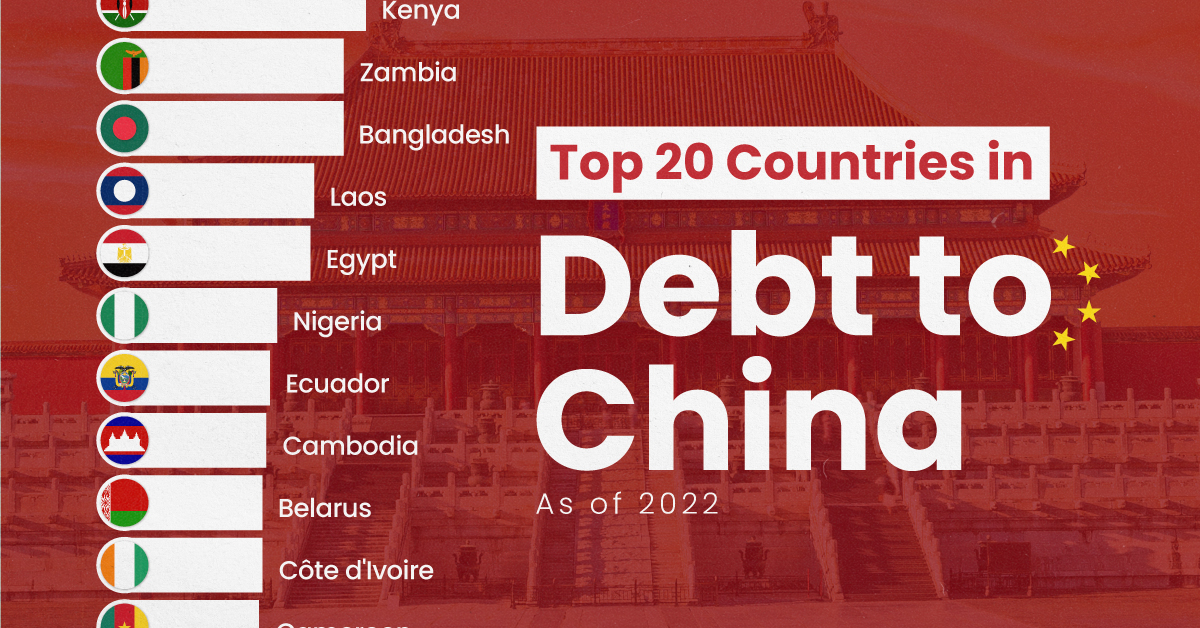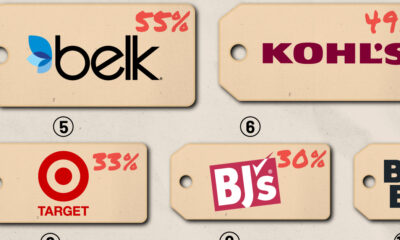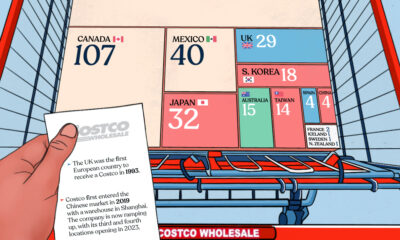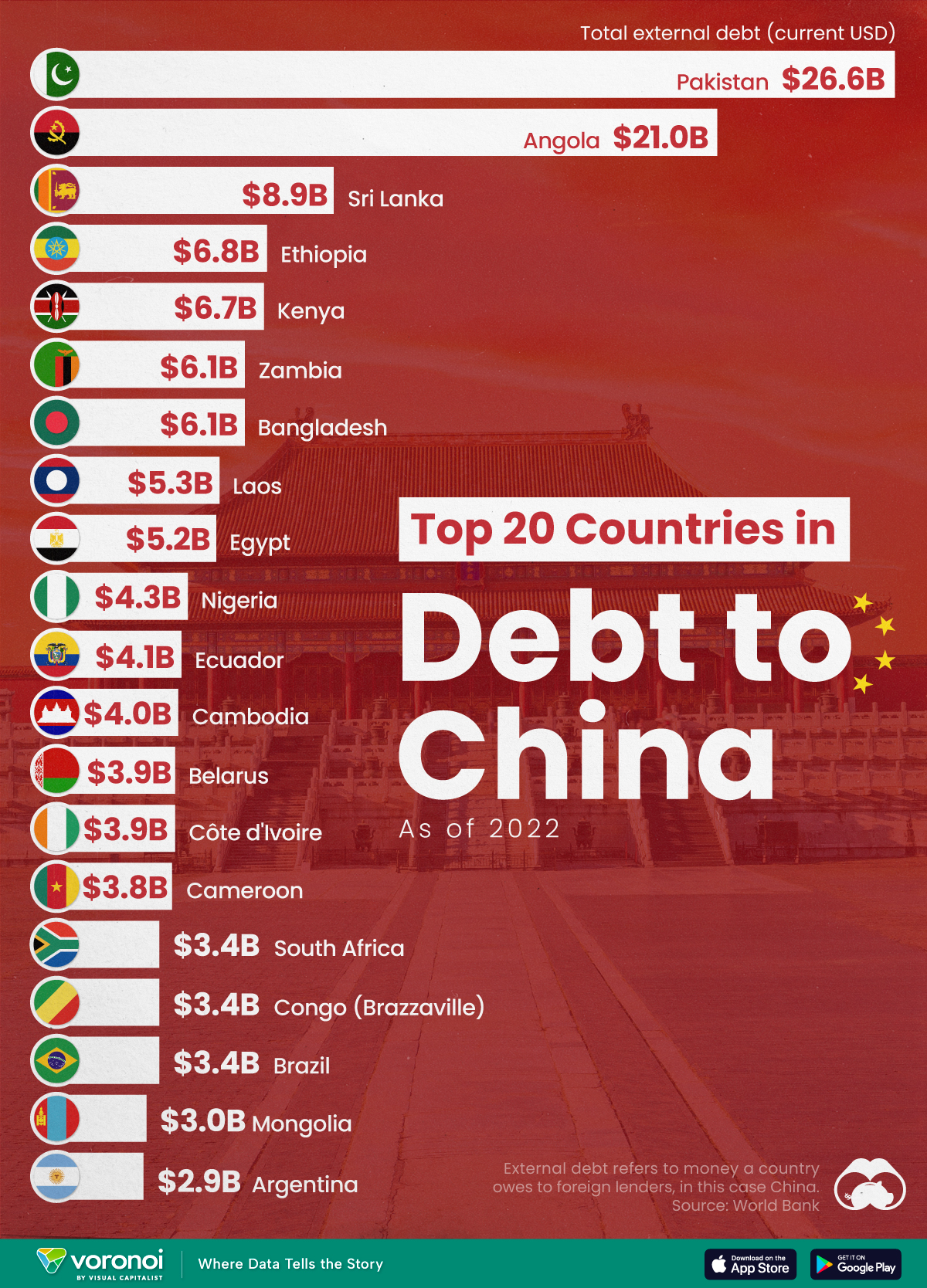Money
The Early Business Pursuits of Bezos, Buffett, and Other Legends
They say everyone has to start somewhere.
And for legends like Jeff Bezos, Warren Buffett, Estée Lauder, and Richard Branson – well, they got into the money-making game early.
From hawking golf balls to bootstrapping student magazines, many of these iconic entrepreneurs started their very first businesses in their childhood or teenage years. Not all of these enterprises fared well, but they did give these eventual magnates an early taste of the startup life.
Childhood Ambition
Today’s infographic comes to us from Colonial Life, and it showcases the early endeavors of ten successful business greats:

While some business greats weren’t afraid to get started later on, people like Warren Buffett and Jeff Bezos had an entrepreneurial drive at a very early age.
It likely drove their parents wild, but it seems that hitting the ground running ended up paying off in the long run.
Entrepreneurial Early Years
How did famous entrepreneurs get their feet wet in business? It generally falls into two categories.
1. Work With What You Have
People like Warren Buffett, Ingvar Kamprad, and Daymond John worked with what they had, finding the easiest route into business possible.
Buffett sold golf balls, built an ambitious newspaper route, and sold gum. Meanwhile, Ingvar Kamprad marked up wholesale matches to sell them to neighbors for a profit, while Daymond John personalized pencils in his school classes.
The lesson here? Sometimes the first opportunities you see are not glorious game-changers – instead, you need to apply hard work and creativity to a widely available opportunity and grind it out.
2. Early Passions Realized
On the other hand, entrepreneurs like Michael Dell, Max Levchin, Kevin Plank, and Estée Lauder realized their passions early, and these initial childhood ambitions were linked to their later careers.
Dell and Levchin were both involved in computers early – either building them or programming on them – and would both start renowned tech companies (Dell and Paypal) in their adult lives. Kevin Plank of Under Armour was in the apparel business early, selling t-shirts at local concerts, and Estée Lauder was selling cosmetics to her friends that were made by her chemist uncle.
Want other useful hints from the world’s best? Take a look at the Habits of Highly Successful Entrepreneurs.
Economy
Ranked: The Top 20 Countries in Debt to China
The 20 nations featured in this graphic each owe billions in debt to China, posing concerns for their economic future.

Ranked: The Top 20 Countries in Debt to China
This was originally posted on our Voronoi app. Download the app for free on iOS or Android and discover incredible data-driven charts from a variety of trusted sources.
In this graphic, we ranked the top 20 countries by their amount of debt to China. These figures are as of 2022, and come from the World Bank (accessed via Yahoo Finance).
The data used to make this graphic can be found in the table below.
| Country | Total external debt to China ($B) |
|---|---|
| 🇵🇰 Pakistan | $26.6 |
| 🇦🇴 Angola | $21.0 |
| 🇱🇰 Sri Lanka | $8.9 |
| 🇪🇹 Ethiopia | $6.8 |
| 🇰🇪 Kenya | $6.7 |
| 🇧🇩 Bangladesh | $6.1 |
| 🇿🇲 Zambia | $6.1 |
| 🇱🇦 Laos | $5.3 |
| 🇪🇬 Egypt | $5.2 |
| 🇳🇬 Nigeria | $4.3 |
| 🇪🇨 Ecuador | $4.1 |
| 🇰🇭 Cambodia | $4.0 |
| 🇨🇮 Côte d'Ivoire | $3.9 |
| 🇧🇾 Belarus | $3.9 |
| 🇨🇲 Cameroon | $3.8 |
| 🇧🇷 Brazil | $3.4 |
| 🇨🇬 Republic of the Congo | $3.4 |
| 🇿🇦 South Africa | $3.4 |
| 🇲🇳 Mongolia | $3.0 |
| 🇦🇷 Argentina | $2.9 |
This dataset highlights Pakistan and Angola as having the largest debts to China by a wide margin. Both countries have taken billions in loans from China for various infrastructure and energy projects.
Critically, both countries have also struggled to manage their debt burdens. In February 2024, China extended the maturity of a $2 billion loan to Pakistan.
Soon after in March 2024, Angola negotiated a lower monthly debt payment with its biggest Chinese creditor, China Development Bank (CDB).
Could China be in Trouble?
China has provided developing countries with over $1 trillion in committed funding through its Belt and Road Initiative (BRI), a massive economic development project aimed at enhancing trade between China and countries across Asia, Africa, and Europe.
Many believe that this lending spree could be an issue in the near future.
According to a 2023 report by AidData, 80% of these loans involve countries in financial distress, raising concerns about whether participating nations will ever be able to repay their debts.
While China claims the BRI is a driver of global development, critics in the West have long warned that the BRI employs debt-trap diplomacy, a tactic where one country uses loans to gain influence over another.
Learn More About Debt from Visual Capitalist
If you enjoyed this post, check out our breakdown of $97 trillion in global government debt.
-

 Demographics7 days ago
Demographics7 days agoThe Countries That Have Become Sadder Since 2010
-

 Green2 weeks ago
Green2 weeks agoRanked: The Countries With the Most Air Pollution in 2023
-

 Green2 weeks ago
Green2 weeks agoRanking the Top 15 Countries by Carbon Tax Revenue
-

 Markets2 weeks ago
Markets2 weeks agoU.S. Debt Interest Payments Reach $1 Trillion
-

 Mining2 weeks ago
Mining2 weeks agoGold vs. S&P 500: Which Has Grown More Over Five Years?
-

 Energy2 weeks ago
Energy2 weeks agoThe World’s Biggest Nuclear Energy Producers
-

 Misc2 weeks ago
Misc2 weeks agoHow Hard Is It to Get Into an Ivy League School?
-

 Debt2 weeks ago
Debt2 weeks agoHow Debt-to-GDP Ratios Have Changed Since 2000















